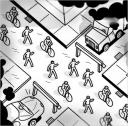 The Times has an op-ed today titled, “The City That Never Walks” about how New York is “falling behind” other American cities when it comes to, what, exactly? “Pedestrian issues,” the author writes, whatever that means. But the writer couldn’t possibly be talking about the actual number of steps a New Yorker takes every day compared to all other city residents in the nation. Nor could the writer be talking about the car ownership rate either, which is far lower in New York than any other city. Even though I am in agreement with the sentiment of this op-ed — that walking and biking are better modes of transportation on many levels, and cities should design streets and sidewalks to facilitate those alternatives — this piece is not at all convincing in its main assertion, that New York is “falling behind” other American cities when it comes walkability.
The Times has an op-ed today titled, “The City That Never Walks” about how New York is “falling behind” other American cities when it comes to, what, exactly? “Pedestrian issues,” the author writes, whatever that means. But the writer couldn’t possibly be talking about the actual number of steps a New Yorker takes every day compared to all other city residents in the nation. Nor could the writer be talking about the car ownership rate either, which is far lower in New York than any other city. Even though I am in agreement with the sentiment of this op-ed — that walking and biking are better modes of transportation on many levels, and cities should design streets and sidewalks to facilitate those alternatives — this piece is not at all convincing in its main assertion, that New York is “falling behind” other American cities when it comes walkability.
Yes, other cities are improving mass transit and creating walkable downtowns. Great. This is hardly a zero-sum game. I’m also 100 percent supportive of the grassroots efforts here in New York to calm traffic and improve pedestrian life that the author mentions (Gansevoort Plaza for one, which I’ve posted about here). But to say that New York is “falling behind” other American cities without saying what is being measured is rather sloppy, and provides the libertarian crowd ammunition to dismiss planners and planner-friendly advocates as silly. Here’s another bit of silliness:
Boston’s mayor has endorsed converting Hanover Street in the city’s North End into a car-free pedestrian mall. Why don’t we do the same in part or even all of SoHo?
This has been tried before and has failed spectacularly. Car-free, pedestrian-only “malls” were a fad in the 1970s and almost every single street that banned traffic has since been converted back after the pedestrian-only zone not only failed to revitalize street life, but in fact killed what was left of the street-level retail.
First rule of thumb: diversity. Cars don’t have to rule the road, but eliminating any form of transportation to promote another is the surest way to dampen activity and life. The fact is, on a weekend in Soho, when every inch of sidewalk is clogged with shoppers — who often spill onto the cobblestone streets, knocking people over with 7 shopping bags — cars are not the problem. Making life easier for shoppers in Soho would be about the last thing that needs to happen there.
(Not to mention the title, “A City That NEVER Walks?” I won’t get on the author of this article for the headline, because it probably wasn’t his doing; a headline writer on the op-ed desk most likely scanned the article and, not taking it very seriously, reformulated the first cliche that came to mind and stuck it at the top.)
New York ABSOLUTELY needs to re-prioritize away from auto-driven transportation and toward pedestrians, bikers, scooters, etc. Alas, this op-ed does not advance that argument very much. (Illustration by Harry Campbell).
![]()



 Posted by lisacchamberlain
Posted by lisacchamberlain 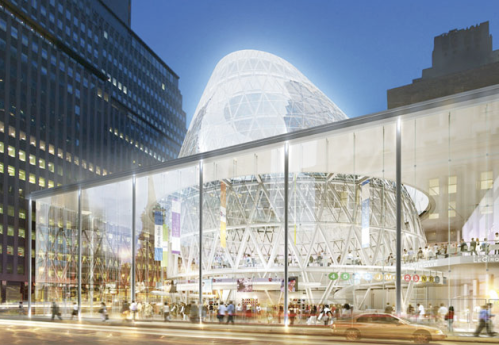
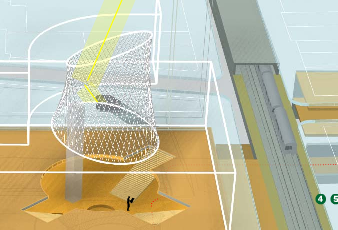


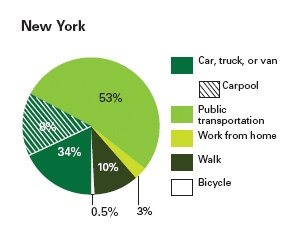
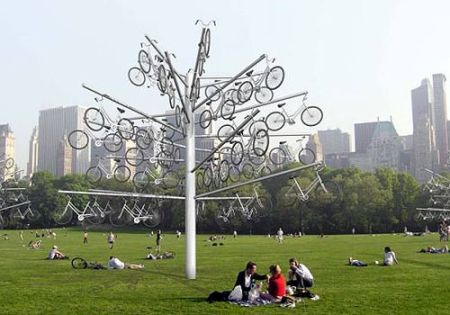
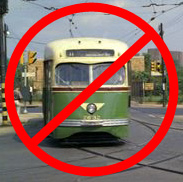
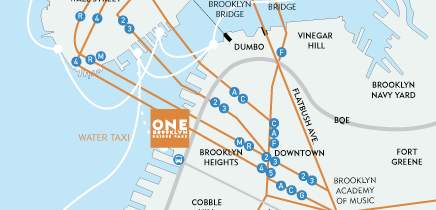


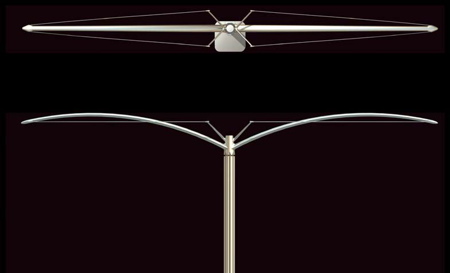

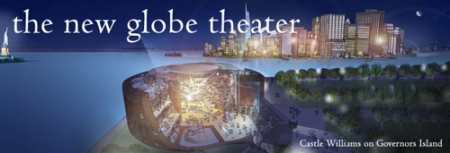
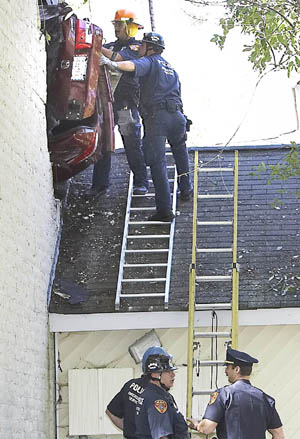 Those happy-go-lucky kids over at
Those happy-go-lucky kids over at 
 1. Moynihan Station, in its third (or is that fourth?) design iteration, will cost $1 billion to turn part of the Farley post office building into a partial replacement for Penn Station across the street. The catch: the only tenant is NJ Transit, which will leave behind 80 percent of commuters who currently use the old Penn Station in the pit below Madison Square Garden. This makes absolutely no sense. The inanity of this was pointed out when an even
1. Moynihan Station, in its third (or is that fourth?) design iteration, will cost $1 billion to turn part of the Farley post office building into a partial replacement for Penn Station across the street. The catch: the only tenant is NJ Transit, which will leave behind 80 percent of commuters who currently use the old Penn Station in the pit below Madison Square Garden. This makes absolutely no sense. The inanity of this was pointed out when an even 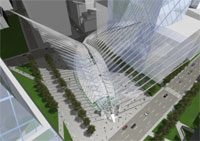
 3. The new Fulton Transit Center, run by MTA, is behind schedule and over budget even after the signature architectural element, a huge “oculus,” was reduced in size and – get this – the plans to untangle the clusterf**k of subway lines underneath Fulton were also scaled back. In other words, MTA is
3. The new Fulton Transit Center, run by MTA, is behind schedule and over budget even after the signature architectural element, a huge “oculus,” was reduced in size and – get this – the plans to untangle the clusterf**k of subway lines underneath Fulton were also scaled back. In other words, MTA is 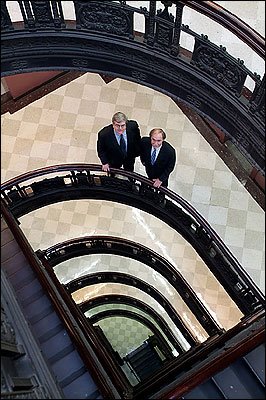 I have
I have 



